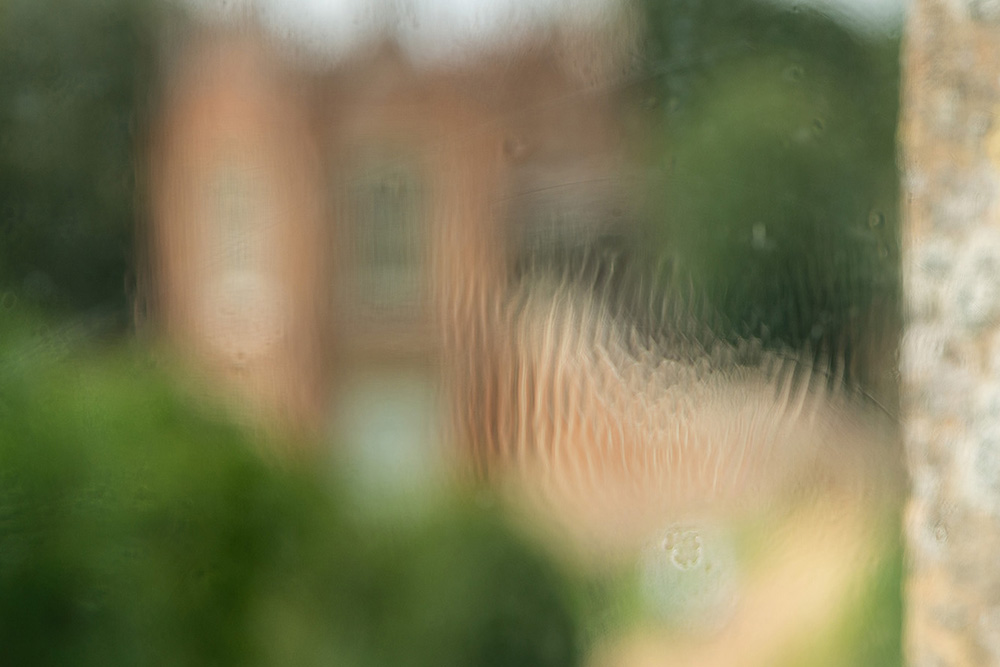20240714 Long Melford
by Andy Corrigan
“On the Green at Long Melford are three great elms, probably U. procera. About 5ft diam. Two are probably over 100ft high.”
Oliver Rackham, Notebook 112, 1967 (CCCC14/6/2/1/112)
1)
Look up, look around, look down.
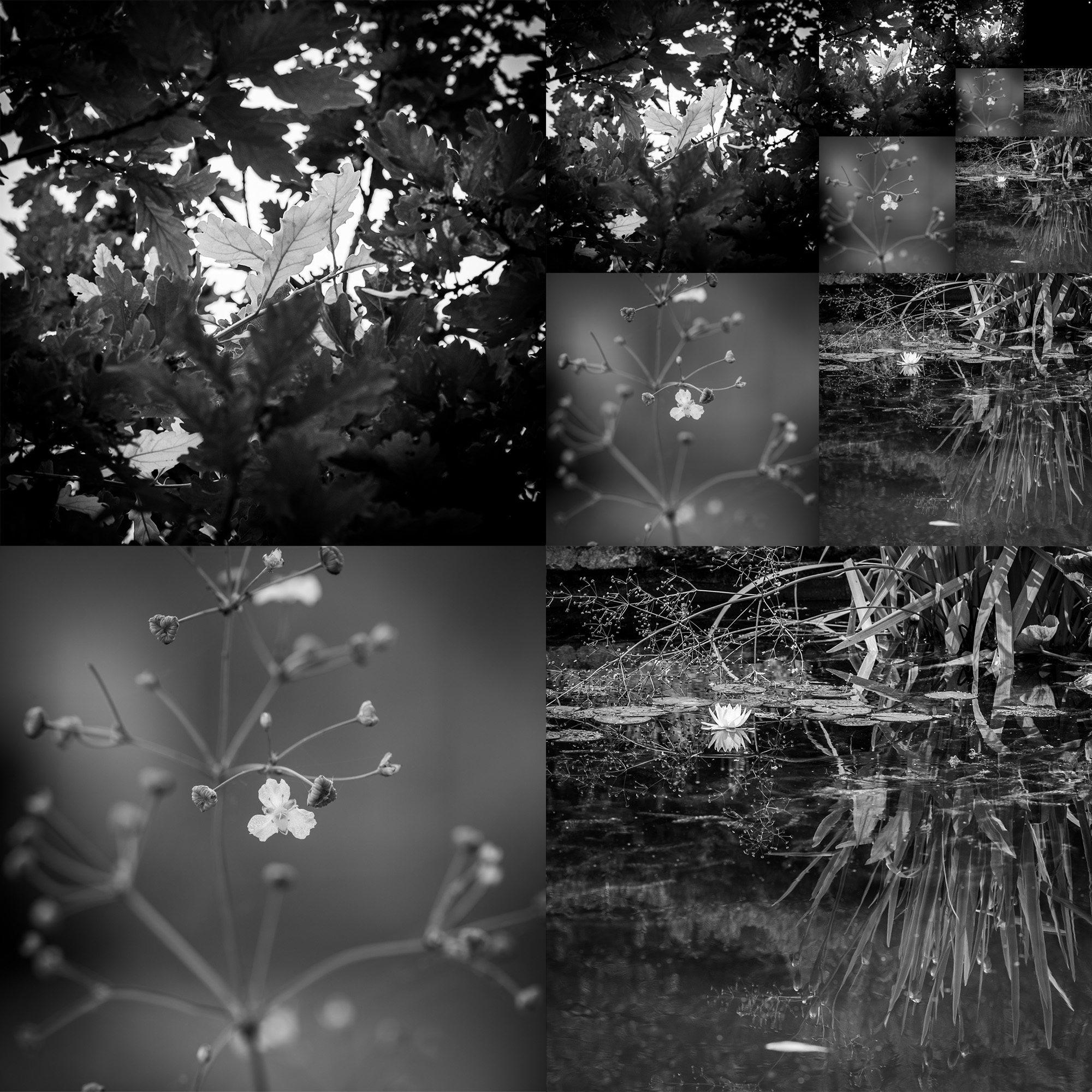
A fresh young Oak leaf emerging, graceful Common water-plantain, and a white waterlily flower reflecting in stillness.
2)
Form and texture.
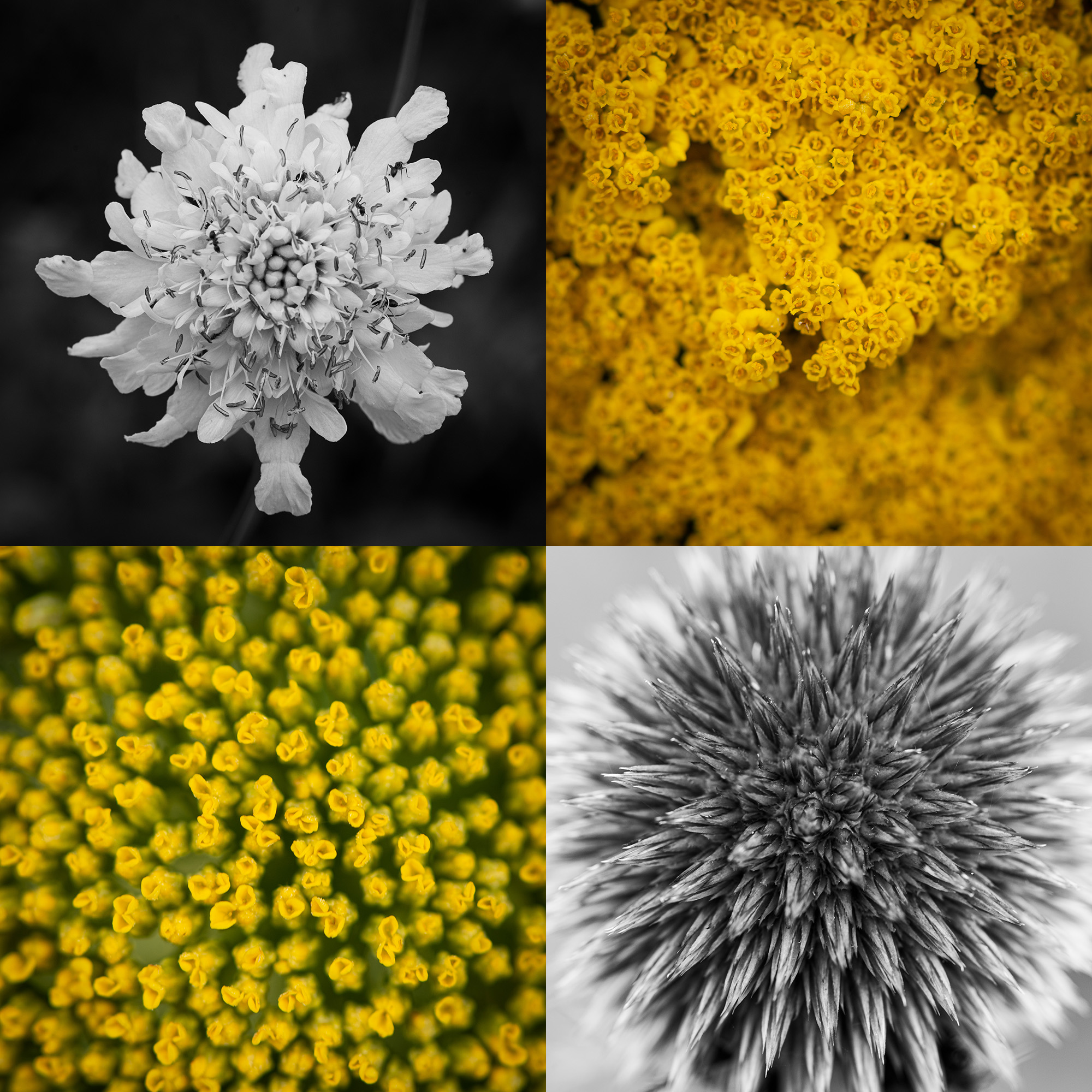
A soft pillowy yellow/cream scabious flower, two yellow flower heads of yarrow, and a spiky globe thistle.
3)
Reflections of jewelled bodies.
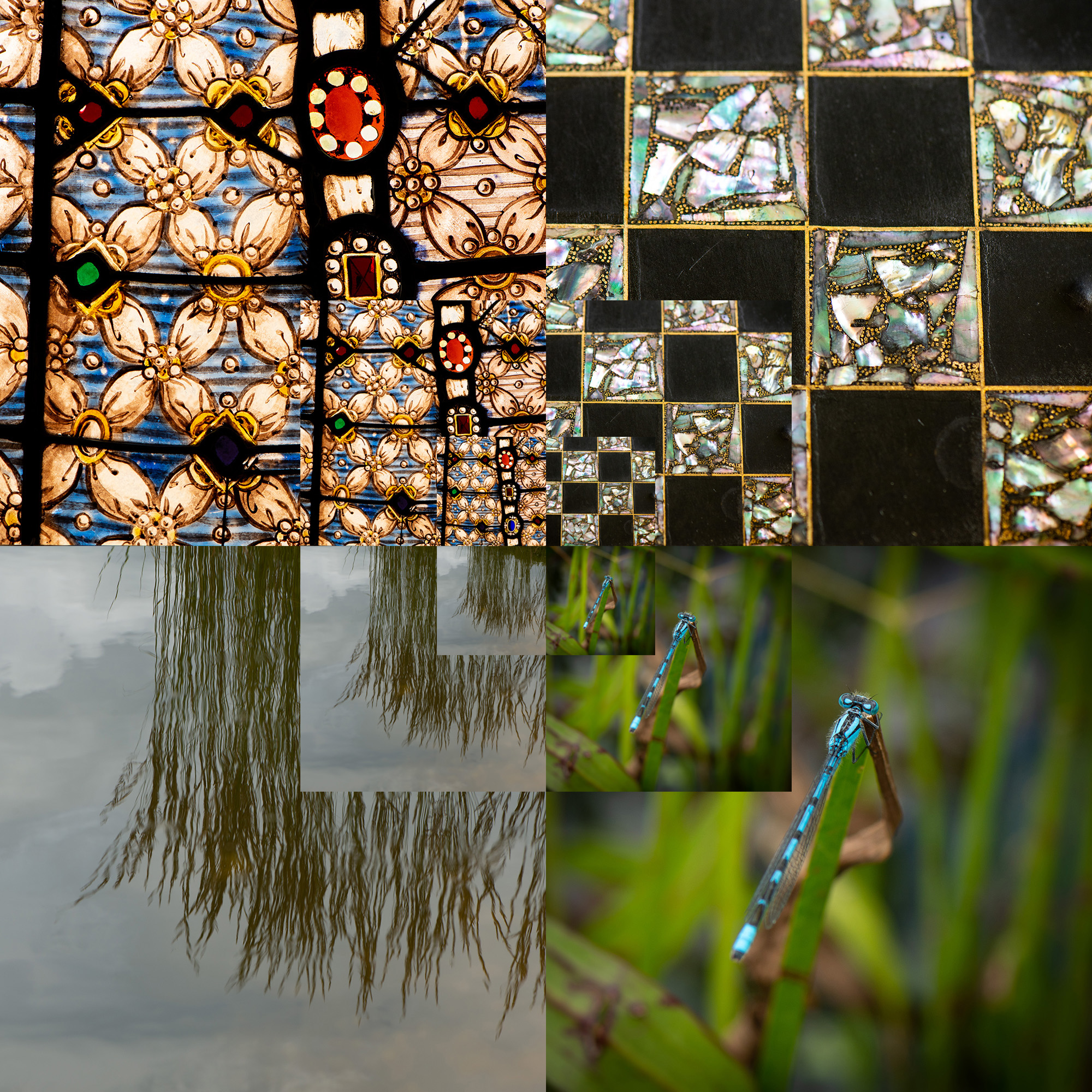
A stained glass window detail of an elaborated decorated and jewelled dress, a mother of pearl chess/chequers board, long grass/reeds reflected in a water surface, and a dragonfly resting on a reed.
“Motion may be lost by reflection. […] In all reflections of any bodies wth ever this rule is true that ye com on center of two or more bodies changeth not its state of motion or rest by ye reflection of those bodies one amongst another.”
Isaac Newton, ‘The Lawes of Motion’, Early Papers (MS Add. 3958)
4)
Choices: Reflections and ripples.
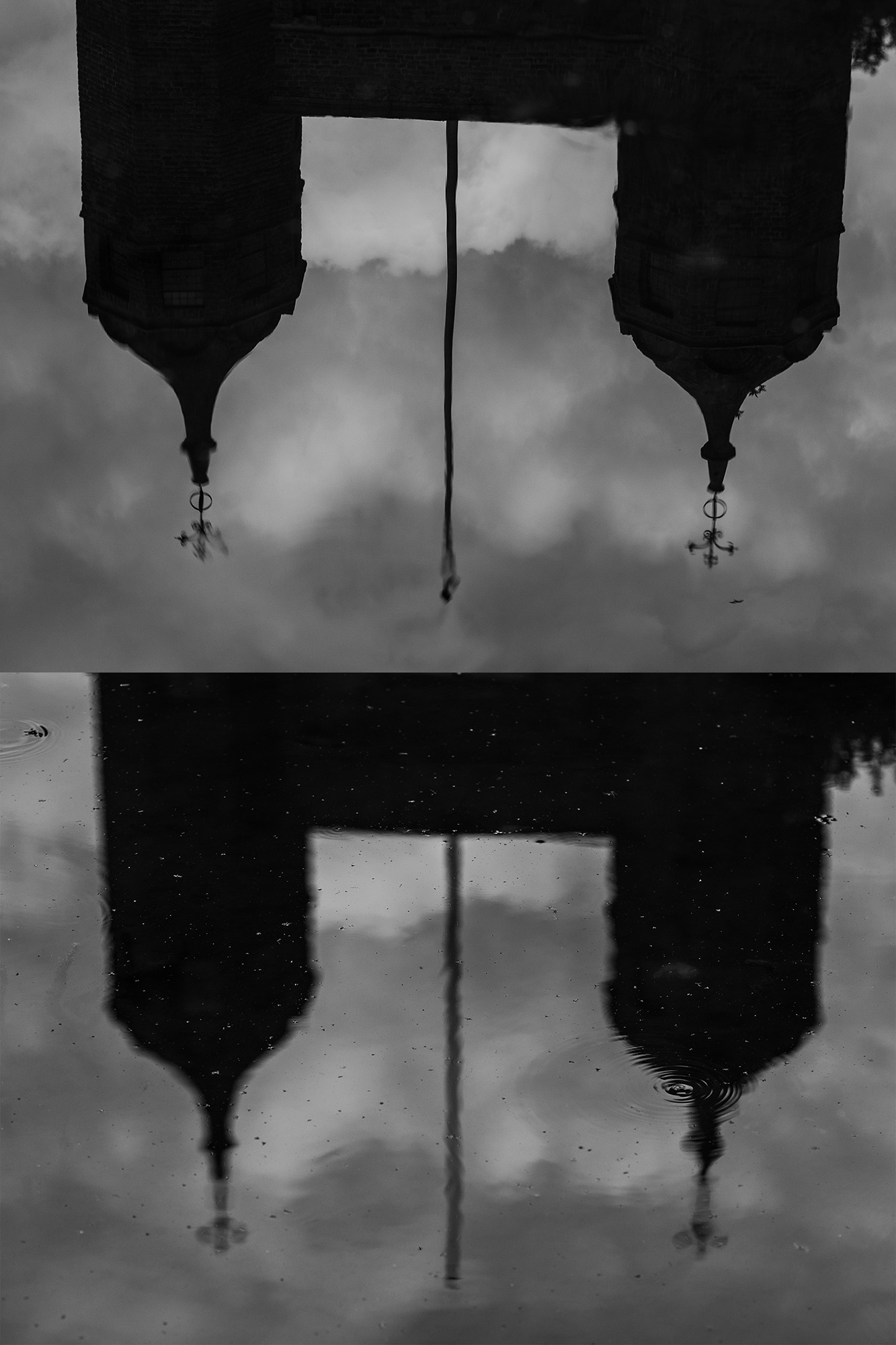
“Granada, Spain. Comares patio (reflection in pool)”, Garth Fowden
5)
Upstairs, downstairs.
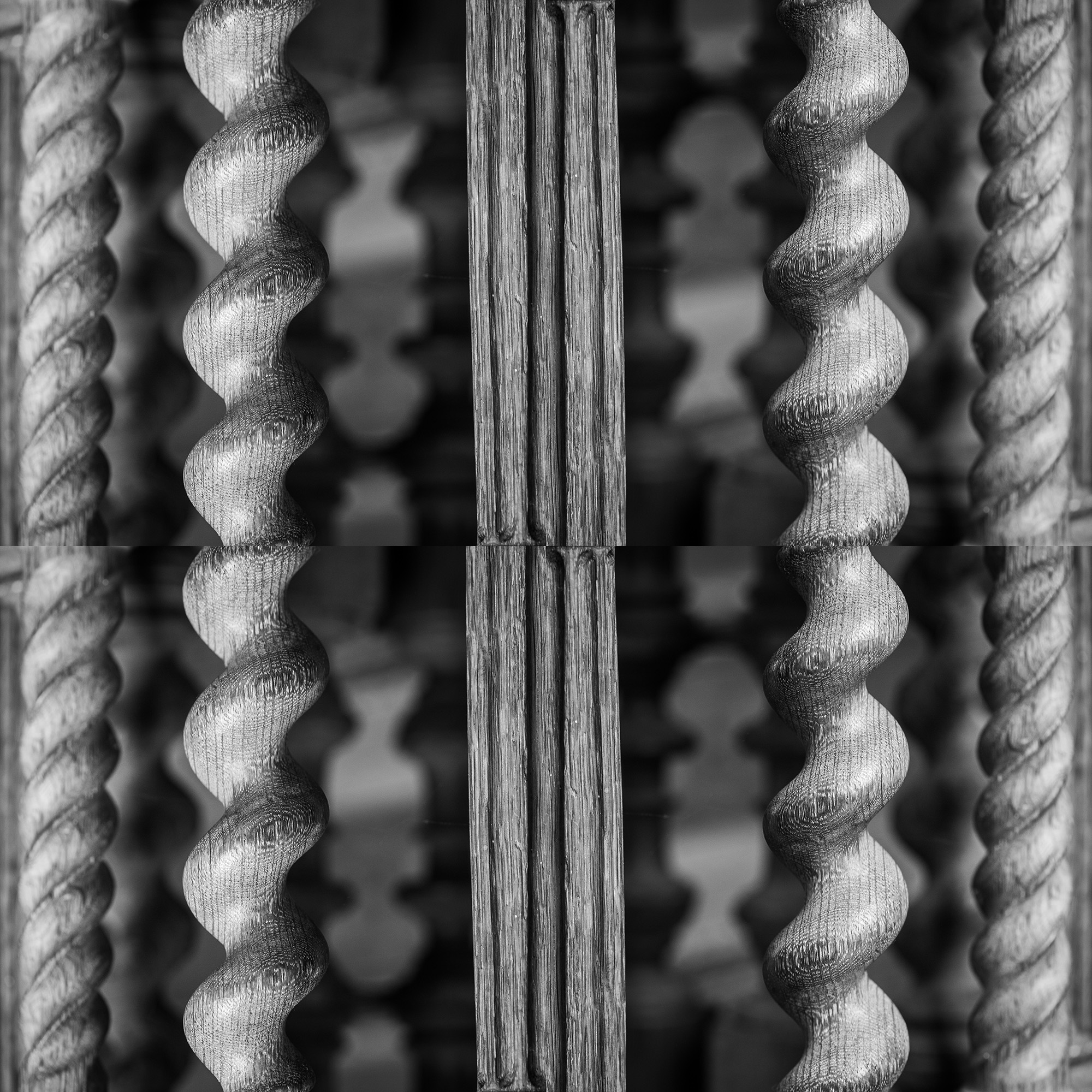
6)
Still we see clearly, we clearly still see.
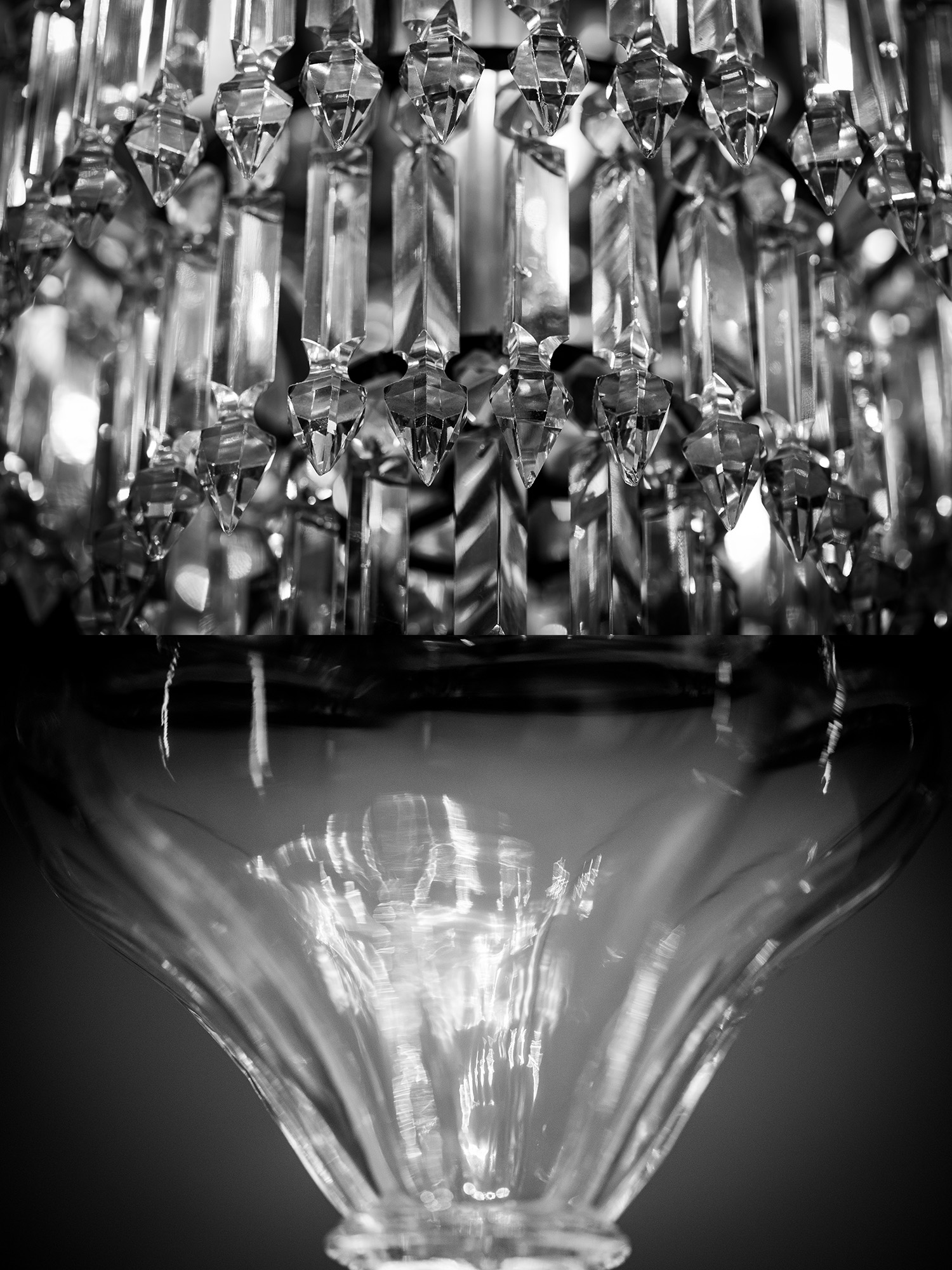
“Besides the Refractions hitherto described, there is a refraction of another kind made in Island-glass, wch is a sort of Talc or pellucid stone found in Island, in the form of an parallelopiped easily clear as crystall splitting in glossy planes parallel to any of its six sides. […] If a beam of light fall perpendicularly upon any surface of this glass, this beam passing through that shall part into two beams… “
Isaac Newton, ‘Hydrostatics, Optics, Sound and Heat’ (MS Add. 3970)
7)
Inside out, outside in.

Atop a luminous pyramidal orchid, a beady-eyed gatekeeper butterfly feeds from washing-up glove flowers - hawkweed - and nature enshrined in marquetry casts a shadow on the wall from the window light.
8)
Floral forms.
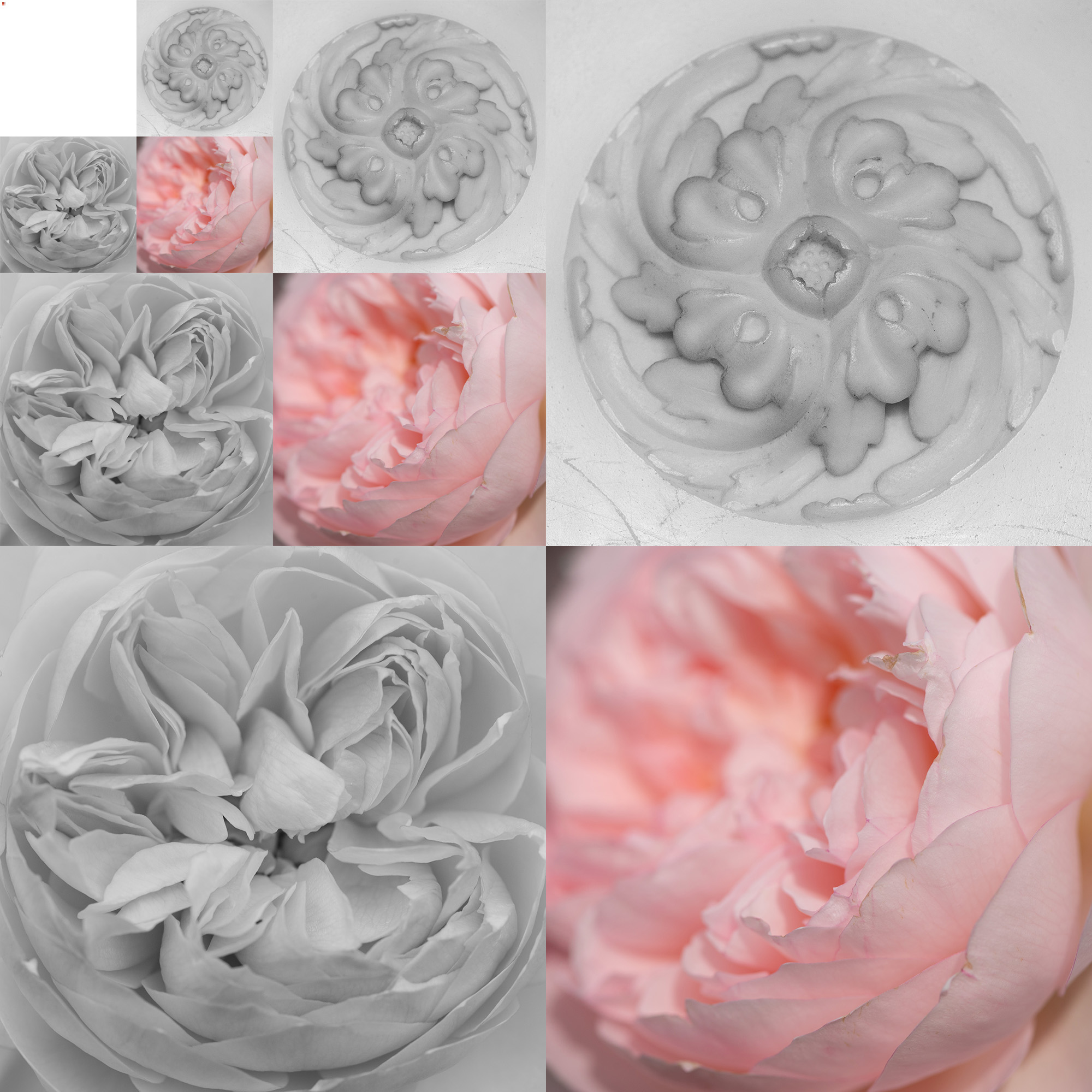
9)
A refracted exterior, an invitation in.
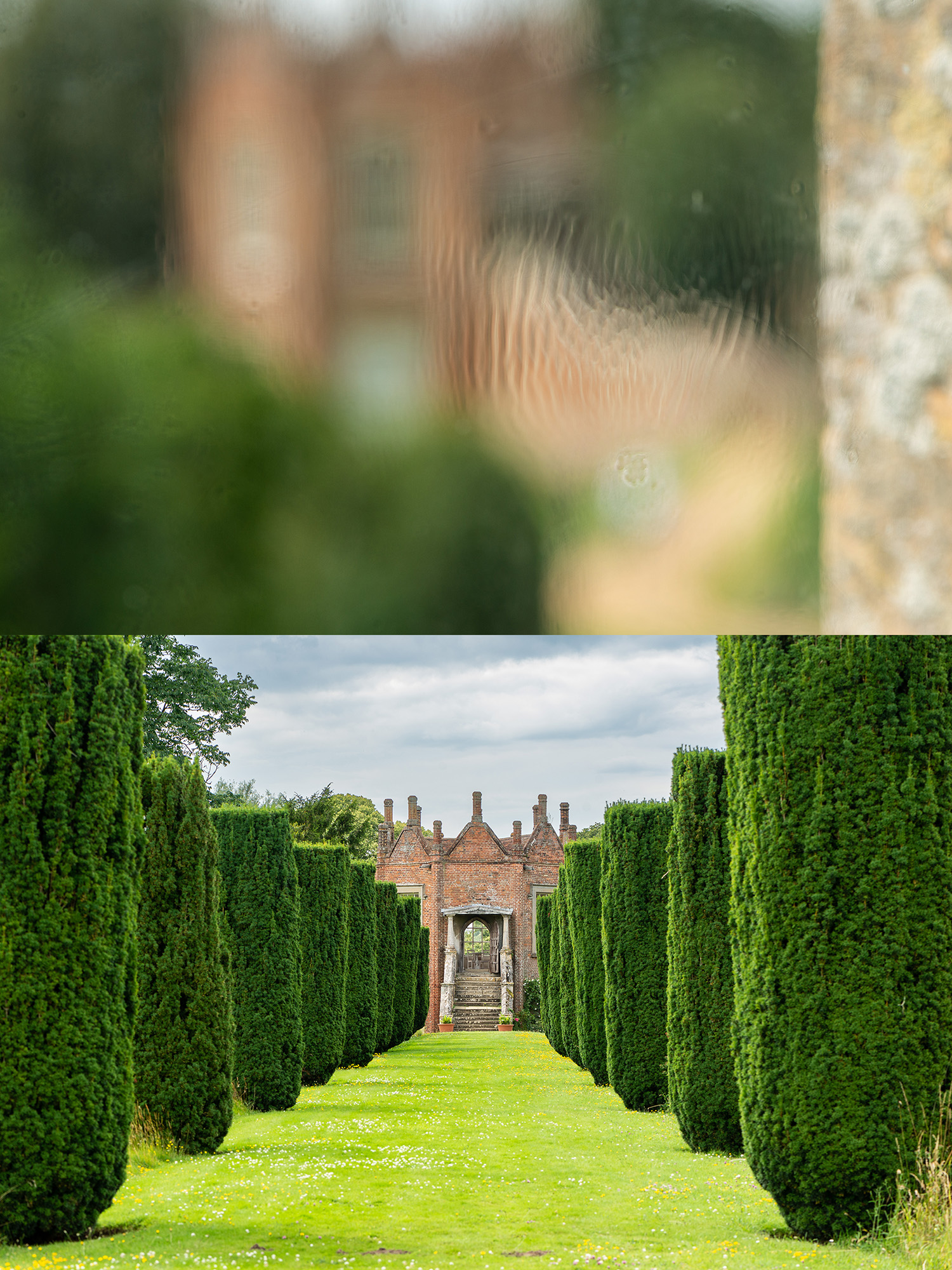
10)
Two sentinels.
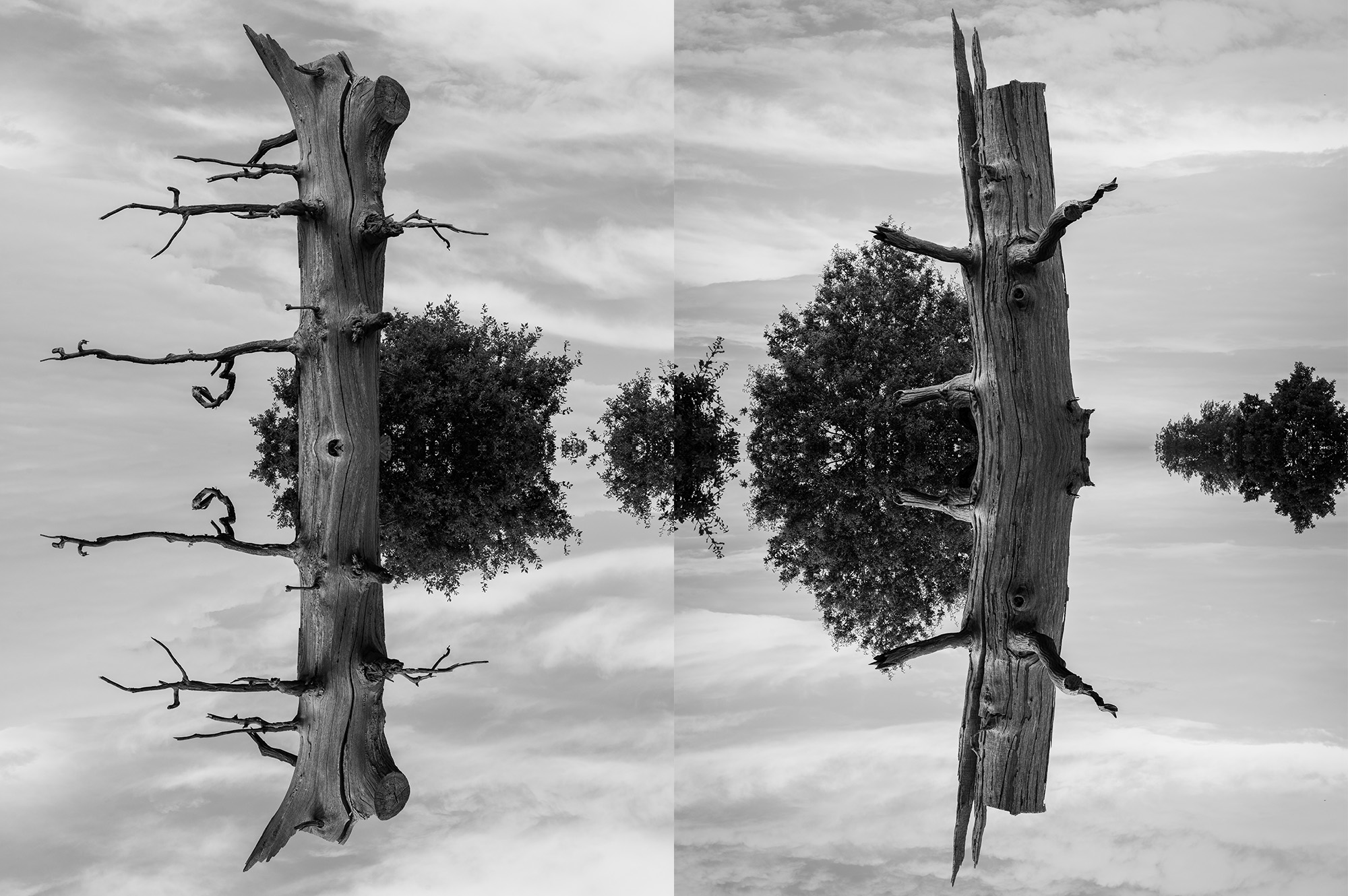
“Few elms remain alive in the area of Melford Hall.”
Oliver Rackham, Notebook 239, 1977 (CCCC14/6/2/1/239)
11)
In search of the elms.
Before setting off, I’d searched the web for “elm trees Long Melford” and luckily one of the first returned results was a painting called Long Melford Green on a Frosty Morning, Suffolk by the artist Stanley Roy Badmin that is in the collections of the V&A.
I could try to find the site of the elm trees and see if any evidence of them remains?
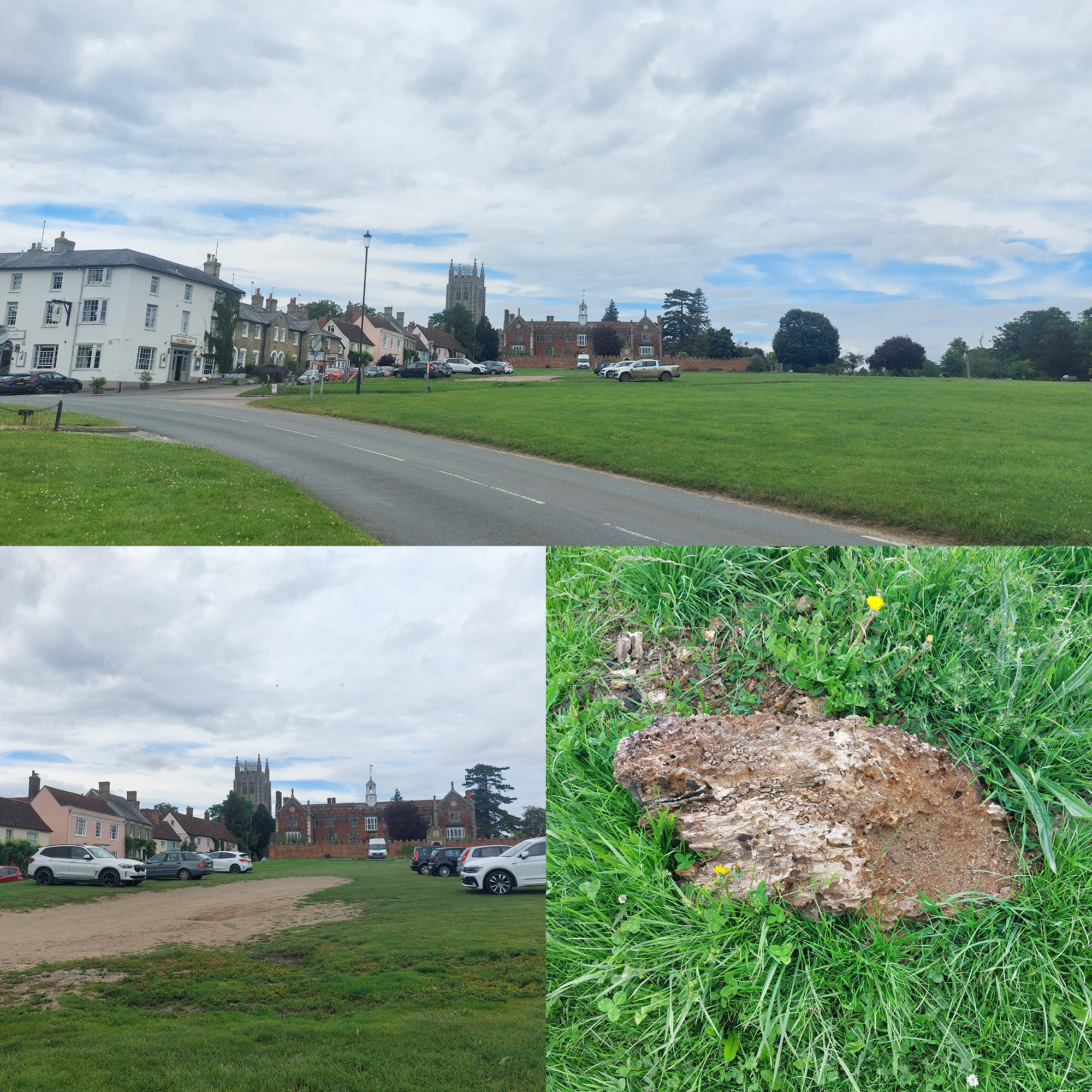
There is a suspiciously uneven area of ground in the otherwise smooth grassed village green which, on my initial reading of Badmin’s painting, is tantalisingly in the area that the trees might have once stood so proudly. There is even a large lump of light coloured worn and rotten wood that is riddled with insect holes … had I found a piece of one of the trees?
12)
Addendum: The place I didn’t go.
When I was writing this up, I decided to do a bit more digging. The Wikipedia page for Long Melford mentions the group of elm trees, noting that it included one of the tallest in the country. There are several citations for this all of which hint at photos of the elms - the first even refers to a photo in one of Oliver Rackham’s books, ‘A History of the Countryside’ (1986) (NB, login required). Sure enough there they are, bare of leaves but standing tall and proud in Plate XXIh, taken in March 1974. There is a row of houses behind the trees, but since the focus of the image is the trees, there are few other distinguishing features.
The second Wikipedia page citation regarding the elms refers to the Francis Frith Collection - Francis Frith is famous for having the incite, early on in the history of photography, to try and photograph every town and village in England, a handy resource! The photo of the Long Melford elms turns out to date to c.1955, long after Frith’s endeavour began and he had lived, but tradition is a fabulous thing. In the photo Long Melford, The Green And Melford Hall c.1955 Photo ref: L101004 we can see the same “Y” shaped form of the group, but we can also clearly see Melford Hall’s gatehouse next to them, and that means I was looking at the wrong end of the green - Damn artists and their creative sense of perspective!
A digital literacy lesson in not solely relying on your first impressions of the first thing you find…
The Francis Frith Collection website encourages users to share memories that images might spark, and something else along these lines came up when I searched the web for “Long Melford elms” - a recent facebook post in a public group called the Long Melford Historical & Archaeological Society, which has a number of older images of the village, including several of the elm trees. The group are clearly quite engaged, because many people have been commenting and sharing their memories of the elm trees, which adds a lovely level of personal depth to their existence. It is perhaps a shame that social media posts such as this are so ephemeral.
The writing of this post has been funded by the AHRC-RLUK Professional Practice Fellowship Scheme for research and academic libraries.
